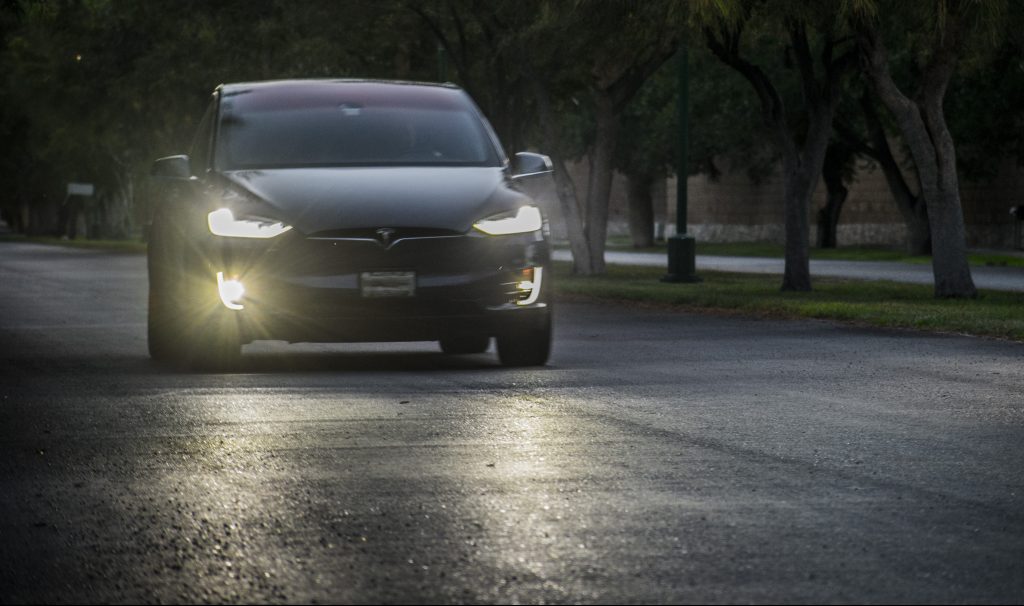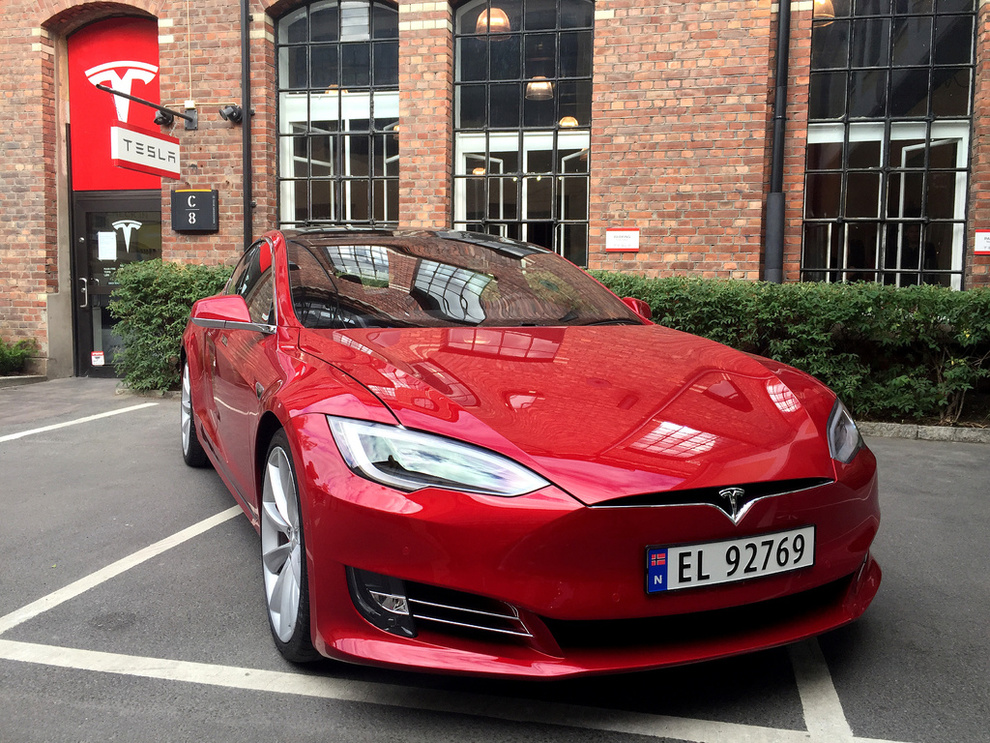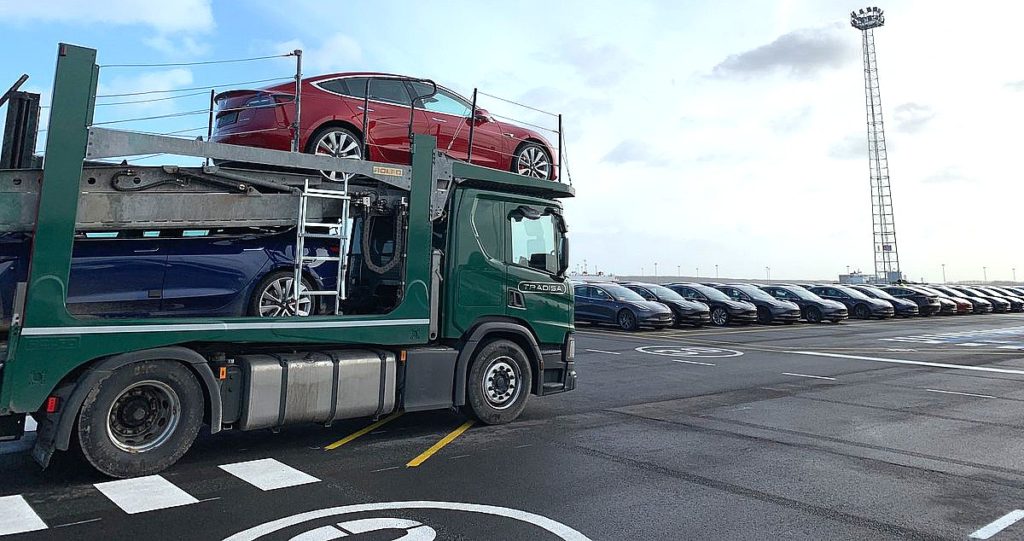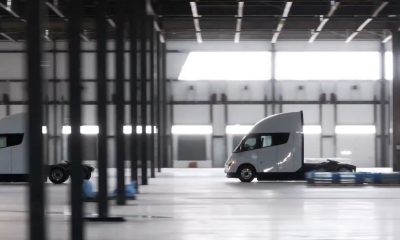

Investor's Corner
Tesla Model S, X softer sales in Europe are NOT due to the Audi e-tron and Jaguar I-PACE
In a note to clients on Wednesday, Bernstein senior technology analyst Toni Sacconaghi concluded that increased competition from vehicles such as the Audi e-tron and the Jaguar I-PACE is responsible for the recent weakness in Tesla’s sales volume in Europe. The analyst further warned that the arrival of other premium electric vehicles like the Mercedes-Benz EQC and the Porsche Taycan could worsen Tesla’s problem.
Explaining further, the Bernstein analyst added that the total market for Europe’s premium electric cars has only grown modestly in 2018 and 2019, and over this time, Tesla’s sales volume has decreased. “Our analysis suggests that the deteriorating sales trajectory of the Model S and X may be primarily due to competition, particularly in Europe, from Jaguar and Audi. In other words, the market isn’t growing much, and Tesla is losing share,” Sacconaghi wrote.
According to TSLA investor @Incentives101, an economist with a background in macro research, Bernstein’s conclusions are inaccurate. In a message to Teslarati, the economist provided a deep dive into the likely causes of the Model S and X’s sales decline in Europe, as well as the reasons why vehicles such as the Jaguar I-PACE and the Audi e-tron are in no way responsible for the reduced market share of Tesla’s flagship sedan and SUV.

Model S and X sales decline
It should be noted that Europe is a region, which means that it is comprised of multiple countries, each with a population of consumers that usually have different preferences in vehicle purchases. Looking at past vehicle sales data, the economist noted that from January-June 2018, Tesla sold 13,426 Model S and X in Europe, while in the first six months of 2019, the figure was 8,037.
“In those months of 2018, Norway and the Netherlands accounted for 52% of sales, while in 2019 it was just 28%. This means that 87% of the drop in sales of Model S and X in Europe is explained by the Norwegian and Dutch market. Furthermore, the Netherlands had Model S and X sales for the first six months of 2018 of 2,833 units and 167 for 2019. This means that the Netherlands by itself explains 50% of the drop in sales for Tesla’s flagship vehicles,” the investor wrote.

The Netherlands and Norway
If one were to look at the sales of the Audi e-tron and the Jaguar I-PACE in the Netherlands for the first half of 2019, one would find that the two vehicles only sold 362 and 111 units, respectively. This means that in the Netherlands, which was behind 50% of the drop in Tesla’s European sales, the e-tron and I-PACE couldn’t have been responsible since their combined sales are only 16% of the Model S and X’s 2018 sales for the same period. With this in mind, some headwinds were met by the Model S and X in the Netherlands, particularly in the form of a change in BIK incentives at the end of 2018, as well as the arrival of the more affordable Model 3, which has reached sales of over 6,000 units in the country.
As explained by the economist, Norway is a key market for Tesla in the European region, and it is responsible for 37% of the drop in Model S and X sales. For the first six months of 2019, Model S and X sales were 2,079 units, while the Audi e-tron sold 2,273 units and the Jaguar I-PACE sold 2,101. Bernstein’s note claimed that the market for premium electric vehicles didn’t increase, and thus, Tesla’s share of the European market just fell. This, according to the investor, is not correct. “If you take the previous Netherlands sales out of the equation — because it becomes incomparable — you’ll see that the market actually increased in Europe,” he wrote.

The actual reasons
The economist noted that there are a couple of factors that likely played a notable part in the decline of the Model S and X’s sales in Norway. First off, Tesla discontinued the 75 kWh (Standard Range) Model S and X, a variant that accounted for more than 80% of the sales in the country. More importantly, Tesla has entered the Norwegian market with the Model 3, a smaller, more affordable vehicle that boasts the best technologies that the electric car maker has to offer. “Norwegians have proven preferences for smaller and cheaper vehicles. Historically, the share of luxury vehicles in Norway is relatively low. It is then by no surprise that the Model 3 is currently selling at levels not seen in any other market, holding 14% of market share for total vehicles,” the economist explained.
In Norway’s case, at least, Tesla appears to have made a notable trade-off. It entered the market with the Model 3, which allowed the company to command 14% of the country’s total vehicle market. This came at a price in the form of a 50% decline in Model S and X sales. Of course, the removal of the Model S and X’s 75 kWh variant, as well as buyer expectations of an impending refresh of the two flagship vehicles, likely played a notable part in Norway’s sales decline as well.
Debunking Bernstein’s thesis
With these factors in mind, it appears that Bernstein’s findings are, for lack of a better term, inaccurate. The economist summed up his thesis as follows. “Two countries explain the drop in sales for the Model S and X almost entirely, and it’s absolutely clear that competition wasn’t the factor. Regulation and consumer preferences are. It is also important to mention that 28% of sales of the Audi e-tron were in Germany as well, a country where the Model S and X have never been strong, even at their peak.
“Consumers in the aggregate always behave rationally. There hasn’t been one example in history where a product(s) that is inferior in every way dominates the market or segment in which they compete. The Audi e-tron, the Jaguar I-PACE, and the Mercedes-Benz EQC are not even in the Model S and X segment specs-wise. Rather, they are closer in specs to the Model 3 and Model Y, both of which undercut them in price. The only reason people mistakenly put them against the Model S and X is their cost,” the investor explained.
Investor's Corner
Tesla could save $2.5B by replacing 10% of staff with Optimus: Morgan Stanley
Jonas assigned each robot a net present value (NPV) of $200,000.

Tesla’s (NASDAQ:TSLA) near-term outlook may be clouded by political controversies and regulatory headwinds, but Morgan Stanley analyst Adam Jonas sees a glimmer of opportunity for the electric vehicle maker.
In a new note, the Morgan Stanley analyst estimated that Tesla could save $2.5 billion by replacing just 10% of its workforce with its Optimus robots, assigning each robot a net present value (NPV) of $200,000.
Morgan Stanley highlights Optimus’ savings potential
Jonas highlighted the potential savings on Tesla’s workforce of 125,665 employees in his note, suggesting that the utilization of Optimus robots could significantly reduce labor costs. The analyst’s note arrived shortly after Tesla reported Q2 2025 deliveries of 384,122 vehicles, which came close to Morgan Stanley’s estimate and slightly under the consensus of 385,086.
“Tesla has 125,665 employees worldwide (year-end 2024). On our calculations, a 10% substitution to humanoid at approximately ($200k NPV/humanoid) could be worth approximately $2.5bn,” Jonas wrote, as noted by Street Insider.
Jonas also issued some caution on Tesla Energy, whose battery storage deployments were flat year over year at 9.6 GWh. Morgan Stanley had expected Tesla Energy to post battery storage deployments of 14 GWh in the second quarter.
Musk’s political ambitions
The backdrop to Jonas’ note included Elon Musk’s involvement in U.S. politics. The Tesla CEO recently floated the idea of launching a new political party, following a poll on X that showed support for the idea. Though a widely circulated FEC filing was labeled false by Musk, the CEO does seem intent on establishing a third political party in the United States.
Jonas cautioned that Musk’s political efforts could divert attention and resources from Tesla’s core operations, adding near-term pressure on TSLA stock. “We believe investors should be prepared for further devotion of resources (financial, time/attention) in the direction of Mr. Musk’s political priorities which may add further near-term pressure to TSLA shares,” Jonas stated.
Investor's Corner
Two Tesla bulls share differing insights on Elon Musk, the Board, and politics
Two noted Tesla bulls have shared differing views on the recent activities of CEO Elon Musk and the company’s leadership.

Two noted Tesla (NASDAQ:TSLA) bulls have shared differing views on the recent activities of CEO Elon Musk and the company’s leadership.
While Wedbush analyst Dan Ives called on Tesla’s board to take concrete steps to ensure Musk remains focused on the EV maker, longtime Tesla supporter Cathie Wood of Ark Invest reaffirmed her confidence in the CEO and the company’s leadership.
Ives warns of distraction risk amid crucial growth phase
In a recent note, Ives stated that Tesla is at a critical point in its history, as the company is transitioning from an EV maker towards an entity that is more focused on autonomous driving and robotics. He then noted that the Board of Directors should “act now” and establish formal boundaries around Musk’s political activities, which could be a headwind on TSLA stock.
Ives laid out a three-point plan that he believes could ensure that the electric vehicle maker is led with proper leadership until the end of the decade. First off, the analyst noted that a new “incentive-driven pay package for Musk as CEO that increases his ownership of Tesla up to ~25% voting power” is necessary. He also stated that the Board should establish clear guidelines for how much time Musk must devote to Tesla operations in order to receive his compensation, and a dedicated oversight committee must be formed to monitor the CEO’s political activities.
Ives, however, highlighted that Tesla should move forward with Musk at its helm. “We urge the Board to act now and move the Tesla story forward with Musk as CEO,” he wrote, reiterating its Outperform rating on Tesla stock and $500 per share price target.
Tesla CEO Elon Musk has responded to Ives’ suggestions with a brief comment on X. “Shut up, Dan,” Musk wrote.
Cathie Wood reiterates trust in Musk and Tesla board
Meanwhile, Ark Investment Management founder Cathie Wood expressed little concern over Musk’s latest controversies. In an interview with Bloomberg Television, Wood said, “We do trust the board and the board’s instincts here and we stay out of politics.” She also noted that Ark has navigated Musk-related headlines since it first invested in Tesla.
Wood also pointed to Musk’s recent move to oversee Tesla’s sales operations in the U.S. and Europe as evidence of his renewed focus in the electric vehicle maker. “When he puts his mind on something, he usually gets the job done,” she said. “So I think he’s much less distracted now than he was, let’s say, in the White House 24/7,” she said.
TSLA stock is down roughly 25% year-to-date but has gained about 19% over the past 12 months, as noted in a StocksTwits report.
Investor's Corner
Cantor Fitzgerald maintains Tesla (TSLA) ‘Overweight’ rating amid Q2 2025 deliveries
Cantor Fitzgerald is holding firm on its bullish stance for the electric vehicle maker.

Cantor Fitzgerald is holding firm on its bullish stance for Tesla (NASDAQ: TSLA), reiterating its “Overweight” rating and $355 price target amidst the company’s release of its Q2 2025 vehicle delivery and production report.
Tesla delivered 384,122 vehicles in Q2 2025, falling below last year’s Q2 figure of 443,956 units. Despite softer demand in some countries in Europe and ongoing controversies surrounding CEO Elon Musk, the firm maintained its view that Tesla is a long-term growth story in the EV sector.
Tesla’s Q2 results
Among the 384,122 vehicles that Tesla delivered in the second quarter, 373,728 were Model 3 and Model Y. The remaining 10,394 units were attributed to the Model S, Model X, and Cybertruck. Production was largely flat year-over-year at 410,244 units.
In the energy division, Tesla deployed 9.6 GWh of energy storage in Q2, which was above last year’s 9.4 GWh. Overall, Tesla continues to hold a strong position with $95.7 billion in trailing twelve-month revenue and a 17.7% gross margin, as noted in a report from Investing.com.
Tesla’s stock is still volatile
Tesla’s market cap fell to $941 billion on Monday amid volatility that was likely caused in no small part by CEO Elon Musk’s political posts on X over the weekend. Musk has announced that he is forming the America Party to serve as a third option for voters in the United States, a decision that has earned the ire of U.S. President Donald Trump.
Despite Musk’s controversial nature, some analysts remain bullish on TSLA stock. Apart from Cantor Fitzgerald, Canaccord Genuity also reiterated its “Buy” rating on Tesla shares, with the firm highlighting the company’s positive Q2 vehicle deliveries, which exceeded its expectations by 24,000 units. Cannacord also noted that Tesla remains strong in several markets despite its year-over-year decline in deliveries.
-

 Elon Musk2 weeks ago
Elon Musk2 weeks agoTesla investors will be shocked by Jim Cramer’s latest assessment
-

 Elon Musk3 days ago
Elon Musk3 days agoxAI launches Grok 4 with new $300/month SuperGrok Heavy subscription
-

 Elon Musk5 days ago
Elon Musk5 days agoElon Musk confirms Grok 4 launch on July 9 with livestream event
-

 News1 week ago
News1 week agoTesla Model 3 ranks as the safest new car in Europe for 2025, per Euro NCAP tests
-

 Elon Musk1 week ago
Elon Musk1 week agoxAI’s Memphis data center receives air permit despite community criticism
-

 News2 weeks ago
News2 weeks agoXiaomi CEO congratulates Tesla on first FSD delivery: “We have to continue learning!”
-

 News2 weeks ago
News2 weeks agoTesla sees explosive sales growth in UK, Spain, and Netherlands in June
-

 Elon Musk2 weeks ago
Elon Musk2 weeks agoTesla scrambles after Musk sidekick exit, CEO takes over sales

















